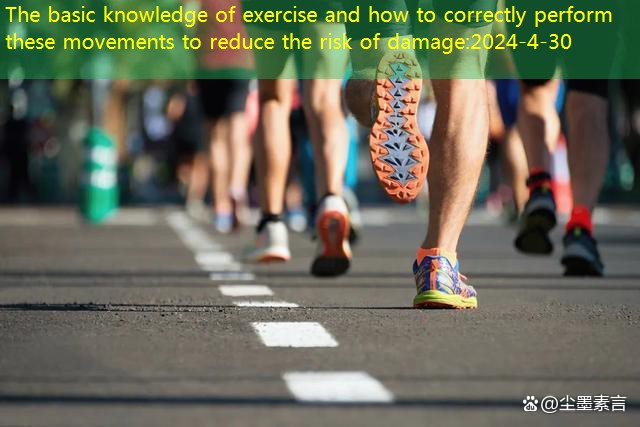Exercise is one of the important ways to maintain good health and enhance physical fitness.Life is movement.The following are the basic knowledge of different types of sports and how to correctly carry out these movements:
1. Aerobic exercise

It refers to exercise that mainly provides energy required in exercise with aerobic metabolism.Sports load and oxygen consumption have a linear relationship.It takes a long time, low -intensity exercise, such as jogging, swimming, cycling, skipping rope, etc.These movements help improve cardiopulmonary function, enhance endurance and burn fat.In order to reduce the risk of damage, you need to pay attention to the following points:
two,Strength Training

Power training refers to the movement that enhances muscle strength and endurance by reusing heavier weights, such as dumbbells, push -ups, and upward bodies.These exercises can help increase muscle quality and bone density.Power training plays an extremely important role in physical health and body shaping, and is one of the important part of modern people’s healthy lifestyles.For fitness Xiaobai, understanding of strength training can help them better plan their training, thereby improving the effect of exercise, avoiding injuries, and establishing good fitness habits.In order to reduce the risk of damage, you need to pay attention to the following points:
1. At the beginning of the primary school, it is recommended to exercise 2-3 times a week to adapt to exercise and try not to over-train.Beginners often have problems such as excessive fatigue, muscle soreness and strain. Excessive exercise will weaken the body’s immune system and health.After the body adapts to the training, the number of training times and strength can be gradually increased.
2,When conducting strength training, pay attention to the control of training time.It is best to control the time of strength training within 60-90 minutes.Excessive training time can lead to overdraft and excessive fatigue of the body, affecting the recovery and performance of the body.Therefore, if the training time is more than 90 minutes, it is recommended to adjust the training plan and intensity appropriately.
2,When training for strength, the correct order of exercise is very important.For different fitness goals, the training order will be different.For fat-reducing people, it is recommended to warm up for 5 minutes, 30-50 minutes anaerobic exercise, more than 30 minutes of aerobic exercise, and stretch for 5 minutes.For the crowd, it is recommended to warm up for 5 minutes, 40-60 minutes of anaerobic exercise, 20 minutes aerobic exercise, and stretching for 5 minutes.Proper warm -up and stretching before exercise can effectively reduce damage and damage caused by exercise.
3. Flexible training

Flexible training refers to exercise that increases joint flexibility and scope through slow and controlled exercises.In daily fitness, flexibility exercise is the easiest to be ignored.The flexibility of muscle and joints greatly reduces damage caused by exercise.
Common flexible training programs:
1. Static stretching: This is the most common flexibility training method. By maintaining the position of stretching, it will increase the flexibility of the muscles.Common static stretching includes the front side of the thigh, the back of the thigh, and the waist torsional.
2. Dynamic stretching: Dynamic stretching is to increase the scope of joint activity by continuous actions. Generally, it involves a series of swing arms, leg swinging, and reversing movements, such as swinging arm stretching, leg swing, etc.
3. Yoga: Yoga is a physical exercise method that integrates breathing, stretching and balanced, which can improve the flexibility, stability, and mind balance of the body.Various yoga asanas can effectively promote the flexibility of the body.
4. Plati: Prate emphasizes the stability and physical control of the nuclear muscle group, and improves the stretching and flexibility of the muscles through various actions.
5. Tai Chi: Tai Chi emphasizes stretching and smooth movements, and improves the body’s flexibility and coordination through slow and stable exercise.
6. Stretch band training: The use of stretch bands can help deepen stretching movements and increase muscle stretching range.Stretch bands can be used to stretch in different parts, such as thighs, chest, shoulders, etc.
7. Squats, squats, and seats: These actions can effectively stretch the muscles of the thighs, hips and waist, and increase the scope of movement of the lower body.
Precautions when doing flexible training projects:
1. Warm: Before conducting flexibility training, you must conduct appropriate warm -up, such as quick walking, skipping rope, etc. to improve the temperature and blood circulation of the muscles.
2. Gradually stretch: When stretching, gradually increase the amplitude of the stretch, and do not excessively force or suddenly twist.
3. Comfortable feeling: When stretching, you should feel slightly stretching, but you should not feel pain.If you feel pain, you should stop the stretching movement.
4. Keep breathing: Keep deep breath when stretching movements, do not hold your breath to keep your body relax and stable.
5. Dumpling: In static stretching, each stretching action should be maintained for 15 to 30 seconds, and the time gradually extends.In dynamic stretching, you can repeat 10 to 15 times.
6. Regular exercises: Flexible training requires continuous practice and persistence. It is best to conduct 2 to 3 times a week to maintain the flexibility of the body.
7. Avoid excessive stretching: Do not excessively stretch when stretching, avoid joint injuries or excessive muscle stretching.
8. Pay attention to the whole body: When conducting flexible training, pay attention to the stretching of the whole body. Don’t just pay attention to a certain part.
9. Adapt to personal abilities: Each person’s physical flexibility is different, so you must choose the appropriate stretching movement and amplitude according to your ability.
10. Professional guidance: If you are a beginner or have specific health problems, it is best to conduct flexible training under the guidance of a professional coach to ensure safety and effect.


